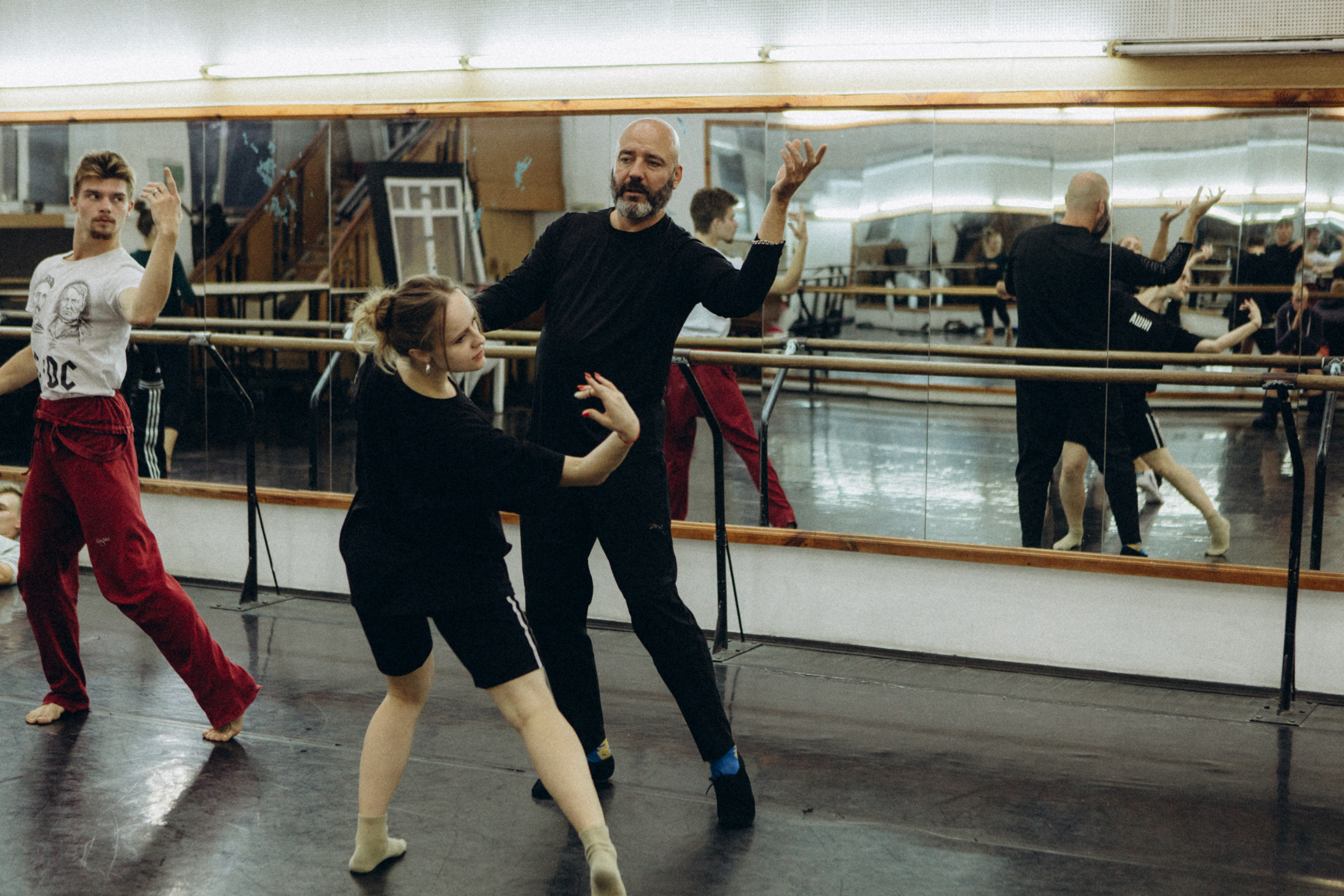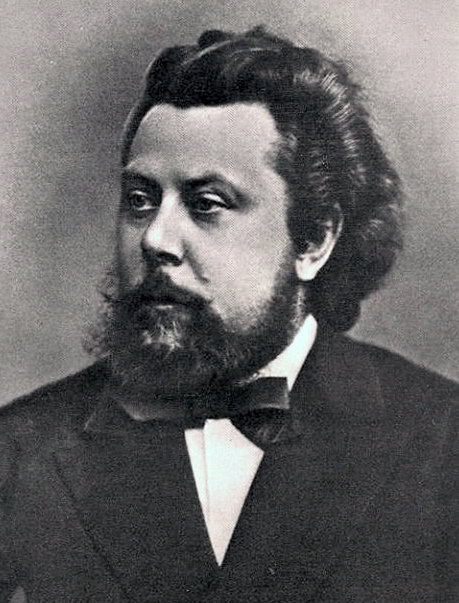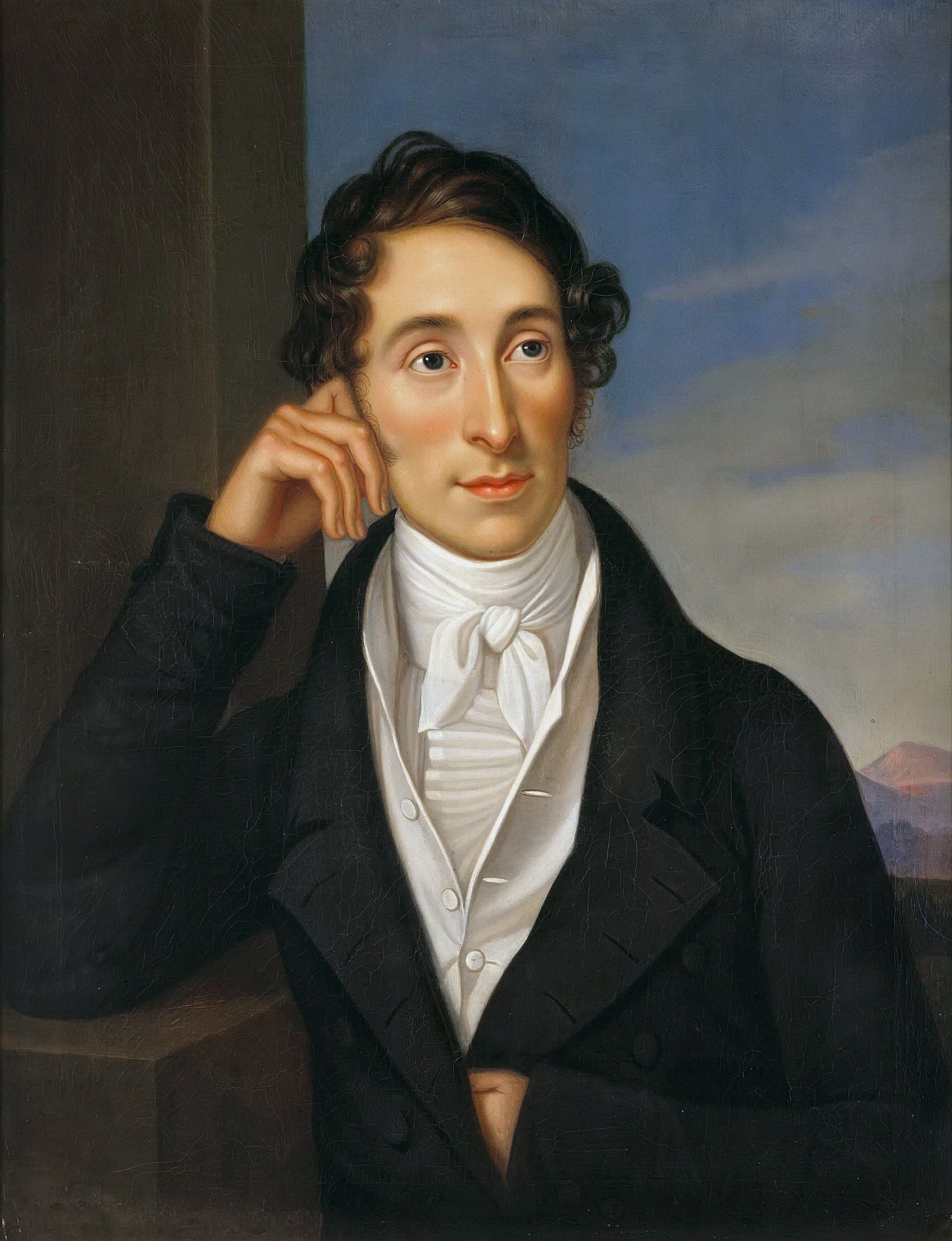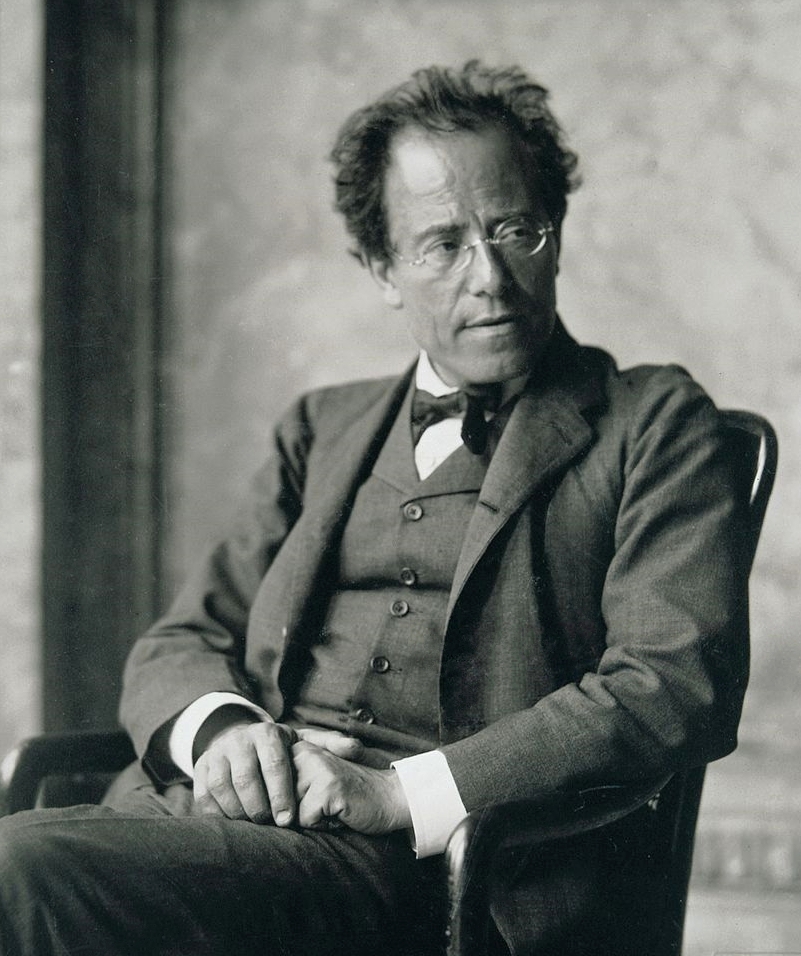|
Radu Poklitaru
Radu Poklitaru (born 1972 in Chișinău, Moldova) – choreographer-director working in Ukraine and many other countries of the world, the Honoured Worker of Culture of Ukraine (2017), the Shevchenko National Prize of Ukraine winner (2016), ''The Personality of the Year'' prize winner (2017), the People's Artist of Moldova (2016), the laureate of numerous international contests, the founder and the chief ballet master of the '' Kyiv Modern-Ballet'' Academic Theatre. Professor of the Department of Modern Choreography at the Kyiv National University of Culture and Arts. Life and career The early years Radu Poklitaru was born on March 22, 1972, in the city of Chișinău, to the family of leading ballet dancers of the Moldova National Opera Ballet Ludmila Nedremska and Vitaliy Poklitaru. He began studying the classical ballet at the age of 4.5 at the Chișinău's Pioneer Palace. He got his professional training at the Moscow State Academy of Choreography (1983—1984), the Ballet Sc ... [...More Info...] [...Related Items...] OR: [Wikipedia] [Google] [Baidu] |
Pyotr Ilyich Tchaikovsky
Pyotr Ilyich Tchaikovsky , group=n ( ; 7 May 1840 – 6 November 1893) was a Russian composer of the Romantic period. He was the first Russian composer whose music would make a lasting impression internationally. He wrote some of the most popular concert and theatrical music in the current classical repertoire, including the ballets '' Swan Lake'' and ''The Nutcracker'', the ''1812 Overture'', his First Piano Concerto, Violin Concerto, the ''Romeo and Juliet'' Overture-Fantasy, several symphonies, and the opera ''Eugene Onegin''. Although musically precocious, Tchaikovsky was educated for a career as a civil servant as there was little opportunity for a musical career in Russia at the time and no system of public music education. When an opportunity for such an education arose, he entered the nascent Saint Petersburg Conservatory, from which he graduated in 1865. The formal Western-oriented teaching that he received there set him apart from composers of the contemporary nati ... [...More Info...] [...Related Items...] OR: [Wikipedia] [Google] [Baidu] |
National Opera Of Ukraine
The Kyiv Opera group was formally established in the summer of 1867, and is the third oldest in Ukraine, after Odessa Opera and Lviv Opera. The Kyiv Opera Company perform at the National Opera House of Ukraine named after Taras Shevchenko in Kyiv. The opera in 2 acts, '' Natalka Poltavka'', was the last scheduled performance before the 2022 Russian invasion of Ukraine. History Early history: 1867 - 20th century Established in the summer of 1867 by Ferdinand Berger (? - 1875). Berger succeeded in inviting many talented singers, musicians, and conductors, and the city council (duma) had offered the newly created troupe to use the City Theatre (constructed in 1856, architect I. Shtrom) for their performances. Officially, the theatre was named the City Theatre but was most commonly referred to as the Russian Opera. The day of the first performance, November 8 (October 27 old style), 1867 was made a city holiday. The performance of the opera '' Askold's Tomb'' by Alexey Vers ... [...More Info...] [...Related Items...] OR: [Wikipedia] [Google] [Baidu] |
Modest Mussorgsky
Modest Petrovich Mussorgsky ( rus, link=no, Модест Петрович Мусоргский, Modest Petrovich Musorgsky , mɐˈdɛst pʲɪˈtrovʲɪtɕ ˈmusərkskʲɪj, Ru-Modest Petrovich Mussorgsky version.ogg; – ) was a Russian composer, one of the group known as " The Five". He was an innovator of Russian music in the Romantic period. He strove to achieve a uniquely Russian musical identity, often in deliberate defiance of the established conventions of Western music. Many of his works were inspired by Russian history, Russian folklore, and other national themes. Such works include the opera '' Boris Godunov'', the orchestral tone poem ''Night on Bald Mountain'' and the piano suite ''Pictures at an Exhibition''. For many years, Mussorgsky's works were mainly known in versions revised or completed by other composers. Many of his most important compositions have posthumously come into their own in their original forms, and some of the original scores are now also ava ... [...More Info...] [...Related Items...] OR: [Wikipedia] [Google] [Baidu] |
Russia
Russia (, , ), or the Russian Federation, is a List of transcontinental countries, transcontinental country spanning Eastern Europe and North Asia, Northern Asia. It is the List of countries and dependencies by area, largest country in the world, with its internationally recognised territory covering , and encompassing one-eighth of Earth's inhabitable landmass. Russia extends across Time in Russia, eleven time zones and shares Borders of Russia, land boundaries with fourteen countries, more than List of countries and territories by land borders, any other country but China. It is the List of countries and dependencies by population, world's ninth-most populous country and List of European countries by population, Europe's most populous country, with a population of 146 million people. The country's capital and List of cities and towns in Russia by population, largest city is Moscow, the List of European cities by population within city limits, largest city entirely within E ... [...More Info...] [...Related Items...] OR: [Wikipedia] [Google] [Baidu] |
Latvia
Latvia ( or ; lv, Latvija ; ltg, Latveja; liv, Leţmō), officially the Republic of Latvia ( lv, Latvijas Republika, links=no, ltg, Latvejas Republika, links=no, liv, Leţmō Vabāmō, links=no), is a country in the Baltic region of Northern Europe. It is one of the Baltic states; and is bordered by Estonia to the north, Lithuania to the south, Russia to the east, Belarus to the southeast, and shares a maritime border with Sweden to the west. Latvia covers an area of , with a population of 1.9 million. The country has a temperate seasonal climate. Its capital and largest city is Riga. Latvians belong to the ethno-linguistic group of the Balts; and speak Latvian, one of the only two surviving Baltic languages. Russians are the most prominent minority in the country, at almost a quarter of the population. After centuries of Teutonic, Swedish, Polish-Lithuanian and Russian rule, which was mainly executed by the local Baltic German aristocracy, the independent R ... [...More Info...] [...Related Items...] OR: [Wikipedia] [Google] [Baidu] |
Belarus
Belarus,, , ; alternatively and formerly known as Byelorussia (from Russian ). officially the Republic of Belarus,; rus, Республика Беларусь, Respublika Belarus. is a landlocked country in Eastern Europe. It is bordered by Russia to the east and northeast, Ukraine to the south, Poland to the west, and Lithuania and Latvia to the northwest. Covering an area of and with a population of 9.4 million, Belarus is the List of European countries by area, 13th-largest and the List of European countries by population, 20th-most populous country in Europe. The country has a hemiboreal climate and is administratively divided into Regions of Belarus, seven regions. Minsk is the capital and List of cities and largest towns in Belarus, largest city. Until the 20th century, different states at various times controlled the lands of modern-day Belarus, including Kievan Rus', the Principality of Polotsk, the Grand Duchy of Lithuania, the Polish–Lithuanian Commonwealth, and t ... [...More Info...] [...Related Items...] OR: [Wikipedia] [Google] [Baidu] |
Renaissance Music
Renaissance music is traditionally understood to cover European music of the 15th and 16th centuries, later than the Renaissance era as it is understood in other disciplines. Rather than starting from the early 14th-century '' ars nova'', the Trecento music was treated by musicology as a coda to Medieval music and the new era dated from the rise of triadic harmony and the spread of the ' ''contenance angloise'' ' style from Britain to the Burgundian School. A convenient watershed for its end is the adoption of basso continuo at the beginning of the Baroque period. The period may be roughly subdivided, with an early period corresponding to the career of Guillaume Du Fay (c. 1397–1474) and the cultivation of cantilena style, a middle dominated by Franco-Flemish School and the four-part textures favored by Johannes Ockeghem (1410's or 20's – 1497) and Josquin des Prez (late 1450's – 1521), and culminating during the Counter-Reformation in the florid counterpoint of Palest ... [...More Info...] [...Related Items...] OR: [Wikipedia] [Google] [Baidu] |
Irish Traditional Music
Irish traditional music (also known as Irish trad, Irish folk music, and other variants) is a genre of folk music that developed in Ireland. In ''A History of Irish Music'' (1905), W. H. Grattan Flood wrote that, in Gaelic Ireland, there were at least ten instruments in general use. These were the ''cruit'' (a small harp) and '' clairseach'' (a bigger harp with typically 30 strings), the ''timpan'' (a small string instrument played with a bow or plectrum), the ''feadan'' (a fife), the ''buinne'' (an oboe or flute), the ''guthbuinne'' (a bassoon-type horn), the ''bennbuabhal'' and ''corn'' ( hornpipes), the ''cuislenna'' (bagpipes – see Great Irish warpipes), the ''stoc'' and ''sturgan'' (clarions or trumpets), and the ''cnamha'' (bones).''A History of Irish Music: Chapter II ... [...More Info...] [...Related Items...] OR: [Wikipedia] [Google] [Baidu] |
Carl Maria Von Weber
Carl Maria Friedrich Ernst von Weber (18 or 19 November 17865 June 1826) was a German composer, conductor, virtuoso pianist, guitarist, and critic who was one of the first significant composers of the Romantic era. Best known for his operas, he was a crucial figure in the development of German ''Romantische Oper'' (German Romantic opera). Throughout his youth, his father, , relentlessly moved the family between Hamburg, Salzburg, Freiberg, Augsburg and Vienna. Consequently he studied with many teachers – his father, Johann Peter Heuschkel, Michael Haydn, Giovanni Valesi, Johann Nepomuk Kalcher and Georg Joseph Vogler – under whose supervision he composed four operas, none of which survive complete. He had a modest output of non-operatic music, which includes two symphonies; a viola concerto; bassoon concerti; piano pieces such as Konzertstück in F minor and '' Invitation to the Dance''; and many pieces that featured the clarinet, usually written for the virtuoso c ... [...More Info...] [...Related Items...] OR: [Wikipedia] [Google] [Baidu] |
Gustav Mahler
Gustav Mahler (; 7 July 1860 – 18 May 1911) was an Austro-Bohemian Romantic composer, and one of the leading conductors of his generation. As a composer he acted as a bridge between the 19th-century Austro-German tradition and the modernism of the early 20th century. While in his lifetime his status as a conductor was established beyond question, his own music gained wide popularity only after periods of relative neglect, which included a ban on its performance in much of Europe during the Nazi era. After 1945 his compositions were rediscovered by a new generation of listeners; Mahler then became one of the most frequently performed and recorded of all composers, a position he has sustained into the 21st century. Born in Bohemia (then part of the Austrian Empire) to Jewish parents of humble origins, the German-speaking Mahler displayed his musical gifts at an early age. After graduating from the Vienna Conservatory in 1878, he held a succession of conducting posts of rising ... [...More Info...] [...Related Items...] OR: [Wikipedia] [Google] [Baidu] |
Josquin Des Prez
Josquin Lebloitte dit des Prez ( – 27 August 1521) was a composer of High Renaissance music, who is variously described as French or Franco-Flemish. Considered one of the greatest composers of the Renaissance, he was a central figure of the Franco-Flemish School and had a profound influence on the music of 16th-century Europe. Building on the work of his predecessors Guillaume Du Fay and Johannes Ockeghem, he developed a complex style of expressive—and often imitative—movement between independent voices (polyphony) which informs much of his work. He further emphasized the relationship between text and music, and departed from the early Renaissance tendency towards lengthy melismatic lines on a single syllable, preferring to use shorter, repeated motifs between voices. Josquin was a singer, and his compositions are mainly vocal. They include masses, motets and secular chansons. Josquin's biography has been continually revised by modern scholarship, and remains highly u ... [...More Info...] [...Related Items...] OR: [Wikipedia] [Google] [Baidu] |

.jpg)





